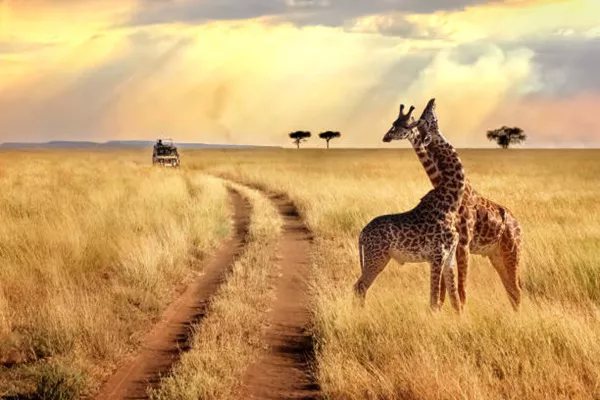
The Serengeti National Park, a name that resonates with the untamed beauty of the African wilderness, stands as a testament to the continent's rich biodiversity and natural wonders. As one of Tanzania's most iconic destinations, the Serengeti holds a treasure trove of fascinating facts that add depth to its allure. In this exploration, we unveil essential Facts About the Serengeti, inviting readers to delve into the marvels that define this renowned national park.
The Serengeti spans an expansive area, covering approximately 30,000 square kilometers. Its sweeping plains and endless savannahs provide a canvas for the Great Migration and a habitat for diverse wildlife.
The Serengeti is synonymous with the Great Migration, one of the most spectacular wildlife events on the planet. Millions of wildebeest, zebras, and gazelles journey across the Serengeti in search of fresh grazing, creating a mesmerizing spectacle.
The park is home to the "Big Five" – lions, elephants, leopards, buffaloes, and rhinoceros – making it a prime destination for safari enthusiasts. Beyond these iconic species, the Serengeti boasts a rich array of fauna, including cheetahs, giraffes, hippos, and numerous bird species.
One unique aspect of the Serengeti is the presence of tree-climbing lions in the Ishasha region. This behavior, rare among lion populations, adds an extra element of intrigue to the park's diverse wildlife.
The Serengeti seamlessly connects with the Ngorongoro Conservation Area, creating a vast expanse that allows wildlife to move freely between these two iconic destinations.
The Serengeti isn't just a haven for contemporary wildlife; it also harbors evidence of ancient human presence. Rock paintings in the region offer glimpses into the lives of early inhabitants.
Visitors to the Serengeti have the unique opportunity to embark on balloon safaris, providing breathtaking aerial views of the landscapes and wildlife below. This immersive experience adds a new dimension to traditional safaris.
In recognition of its outstanding ecological importance, the Serengeti National Park is designated as a UNESCO World Heritage Site. This status reflects its role in preserving the planet's natural heritage.
The Maasai people, with their vibrant cultural heritage, coexist with the wildlife in and around the Serengeti. Encounters with Maasai communities provide a deeper understanding of the region's cultural tapestry.
The park's ecosystems range from open grasslands and acacia woodlands to riverine forests and rocky outcrops. This diversity sustains a wide range of species and contributes to the Serengeti's ecological richness.
As travelers embark on a journey through the Serengeti, they immerse themselves in a world where nature unfolds in its purest form. The Great Migration, the Big Five, and the park's diverse ecosystems are not merely facts but chapters in a captivating story of life in the wild. These Facts About the Serengeti invite exploration, ignite a sense of wonder, and beckon adventurers to witness the untamed beauty of a landscape that epitomizes the essence of Africa's natural splendor.